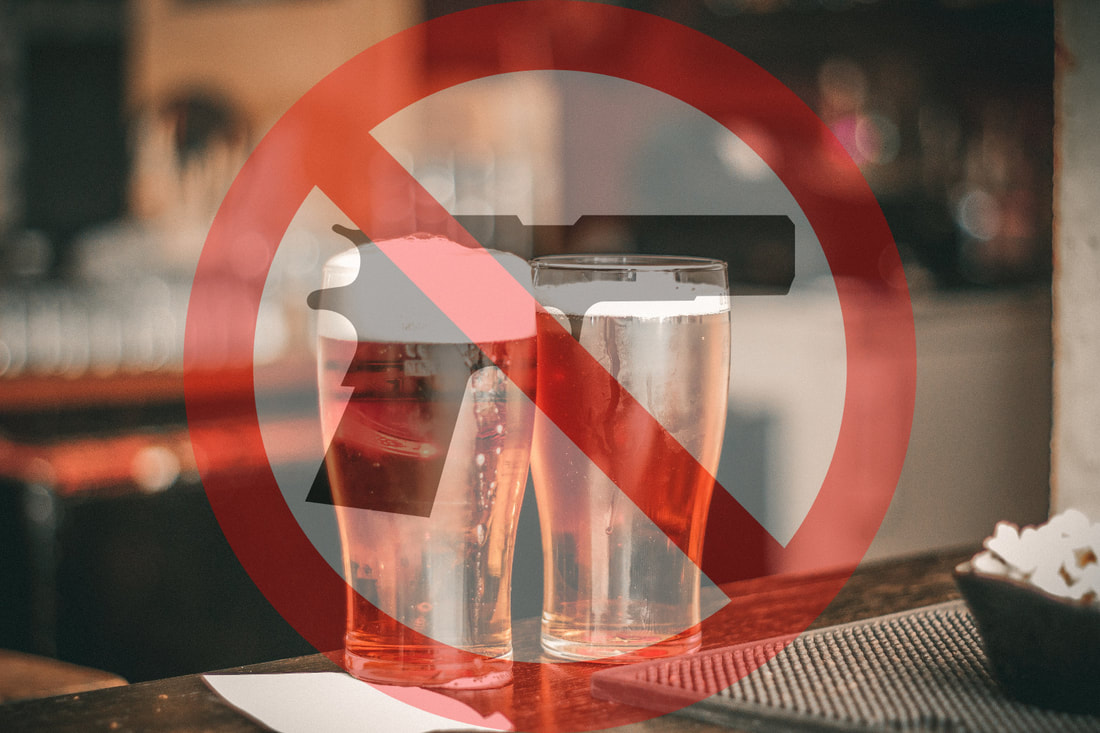|
Several authorities, included noted economist Dr. John Lott, of More Guns, Less Crime fame, have stated that the Borderline Bar and Grill was a “gun free zone,” citing the California standard concealed weapon permit. In short, there is no law making bars gun free zones in the Golden State, but being California and for the reasons below, it was a practical gun-free zone. Most authorities and reporters have quoted Section 4 of the California standard concealed weapon permit, which states: While exercising the privileges granted to the licensee under the terms of this license, the licensee shall not, when carrying a concealed weapon: [...] California law does not specifically prohibit carrying firearms in bars or other establishments that serve alcohol. Rather, this section appears to be an entire fabrication of the state Department of Justice. Laws are of two types; statutes and regulations. Statutes are laws expressly passed by the legislature and go into codes; the Penal Code in the case of California, or the Revised Statutes in Nevada. Regulations are often created by bureaucrats pursuant to authority given by statutes; the format of CCWs and course instruction is often dictated by regulation authorized by statutes. For a violation of a regulation to have the force of law, there must be a statute that creates a crime to violate the regulation. This is often written as “It is a crime to knowingly violate the provisions of this chapter or any regulations adopted thereunder.” The US Code frequently does this and places penalties for violating the Federal Code of Regulation that contains the rules for national parks, for example. In the case of California, there is nothing in the state codes or in the state Code of Regulations (CCR) giving weight to the alcohol ban. The only “catch-all” authority is Penal Code section 26200, which states: (a) A license issued pursuant to this article may include any reasonable restrictions or conditions that the issuing authority deems warranted, including restrictions as to the time, place, manner, and circumstances under which the licensee may carry a pistol, revolver, or other firearm capable of being concealed upon the person. The “issuing authority” (sheriff or police chief) is the one who can place the restrictions, not the state, and the conditions must be listed on the permit itself. These conditions are generally intended for permits that are limited to the course and scope of business (such as taking large deposits to the bank). The standard application lists a litany of things one may not do while armed; things that are legal in many other states—and far too many “conditions” to be physically listed on a permit. Now this is California we’re dealing with. One could consider Borderline to be a gun-free zone based simply on the fact that it’s California so carrying concealed is difficult and unusual. I cannot commend on whether or not Borderline has “no guns” signs posted or if security wands individuals. Thousand Oaks and the country music/line dancing crowd there isn’t the type to get into ghetto-style nightclub shootings. Even if it is posted, California “no guns” signs have no force of law. Ventura County is a fairly conservative county and the outgoing sheriff, Geoff Dean, immediately began a “shall-issue” policy within the county upon taking office. While California does have subjective standards that will result in a denial, most persons who apply for a permit will receive one for “self-defense and personal protection.” Even so, long-time pistol owners I know are barely getting around to applying. Because of the infringement placed on the Second Amendment and the intense demonization of firearms, few people in California look to actively carry handguns. It’s ironic because if you have a permit in California, the laws are actually quite permissive in where you can carry; far leeway than Texas. On top of that, most people are told (based off the unenforceable application) that they can’t carry in a bar or while drinking. Borderline serves food, but also has a bar and dance floor. The application doesn’t really define what “primary purpose” is, exactly. There is also the notion that carrying while drinking or in a bar is simply taboo; guilt by association. As far as carrying while drinking, there is a difference between consuming alcohol and getting drunk. The perfect analogy is drunk driving; most people can have one or two beers and drive shortly thereafter just fine. Most people can carry as long as they are not intoxicated, thus states like Nevada have essentially applied the same DUI criteria to possessing a firearm while under the influence of alcohol. The unarmed officers that were out that night may have been drinking to a point where they shouldn’t be carrying or driving; even cops are entitled to a night out. It is just a sad, ironic coincidence that they were present that night. They still rose to the occasion and shielded women with their bodies as well as assisting with first aid and evacuating the wounded. Perhaps all off-duty law enforcement should designate someone as their “designated shooter” when they go out drinking, just in case. Comments are closed.
|
Archives
June 2024
CategoriesBlog roll
Clayton E. Cramer Gun Watch Gun Free Zone The War on Guns Commander Zero The View From Out West |

 RSS Feed
RSS Feed